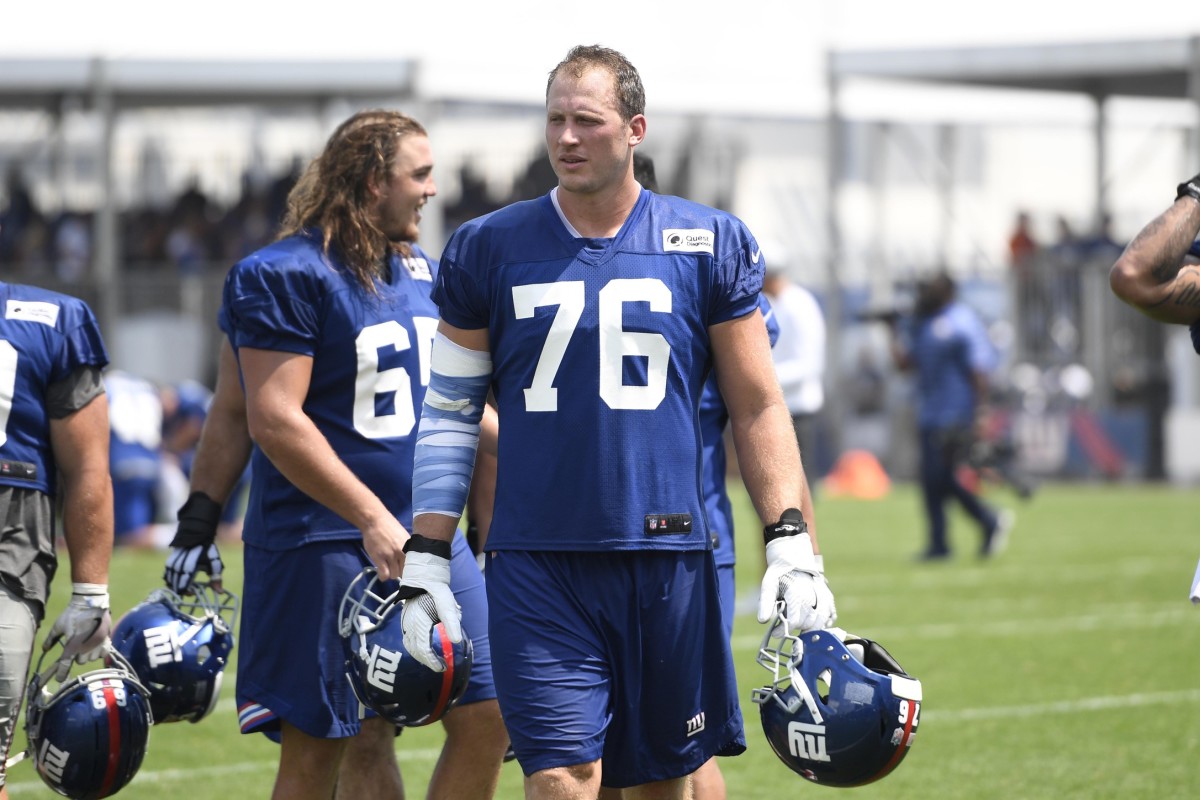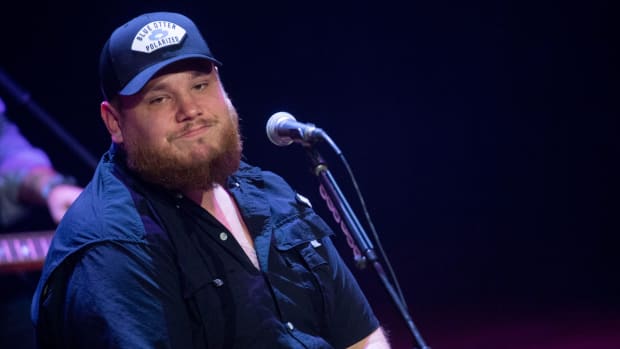How the Giants can reinforce their offensive line

It should be reasonable to assume that the New York Giants offensive line is “fixed”. After all, they have poured a tremendous amount of their limited resources into that offensive line.
They made left tackle Nate Solder the richest offensive lineman in the NFL when they signed him as a free agent out of New England.
They swapped out Patrick Omameh, who last year got a 3-year, $15 million contract to play right guard, for Kevin Zeitler, acquired in a trade with Cleveland for edge rusher Olivier Vernon.
They signed Mike Remmers to play right tackle, and they drafted Will Hernandez at the top of the second round in the 2018 NFL Draft.
Also, they expressed enough confidence in Jon Halapio to not only let Weston Richburg leave via free agency but also trade away Brett Jones, whose play during the 2017 season made Richburg expendable.
That is a lot of capital invested in a single unit and the Giants (and Giants fans) should rightfully expect good play from the offensive line.
But while Pro Football Focus rates the Giants' offensive line 14th in the NFL after three weeks, the play we saw in Week 3 against the Tampa Bay Buccaneers has to give fans and the team pause.
Daniel Jones was sacked five times that game in addition to being hit 11 times. And those five sacks could have easily been six or seven sacks had Tampa defenders taken slightly better angles after beating the Giants' offensive linemen.
Over the course of the game, Tampa's average pass rush got within 3.72 yards of Jones according to NFL NextGenStats, which uses technology sewn into players' uniforms to monitor their position on the field. That might seem like a decently roomy pocket, but the average NFL rush was 4.5 yards from the quarterback in Week 3.
The primary threat was edge rusher Shaq Barrett, whom the Buccaneers signed late in the free agency process for only $4 million. Barrett is off to a truly monstrous start to his 2019 season with 8.0 sacks through three games.
Half of those sacks came against the Giants, as Barrett apparently, replaced his usual pass rush moves with an array of Mortal Kombat finishers to embarrass Solder.
The Giants' left tackle has always been a player who is adequate against the average NFL pass rusher and who has been best against bigger, slower pass rushers.
Solder has struggled throughout his career against more athletic or technically savvy pass rushers, and Barrett is both of those things. Not only is he fast and agile, but he is also relentless, has a wide array of moves, and does a fantastic job of stringing them together in the chess match along the offensive line.
By the fourth quarter, many might have been wondering why the Giants left Solder alone on an island with Barrett, but the truth was that there simply wasn't help to give him.
On the other side, Carl Nassib was proving to be a handful for Mike Remmers, who frequently got chip blocking help from tight end Rhett Ellison.
The Giants couldn't slide a double-team Solder's way either, as Bucs defensive tackle Vita Vea was proving to be a dominant force on the defensive interior.
While Hernandez is a powerful player in his own right and is quickly becoming one of the top guards in the NFL, he struggled to stand up to Vea on a down-to-down basis.
There were even instances where Hernandez was simply thrown out of Vea's way as he charged into the backfield.
The offensive line, which had been one of the best run-blocking units in the NFL, couldn't do a thing against Tampa in the run game, either.
Even before Saquon Barkley was lost to injury, the superstar running back only managed 10 yards on 8 carries as Tampa dominated the line of scrimmage and swarmed to the football.
The Giants' leading rushers that game were Daniel Jones with 28 yards and Sterling Shepard with 21. That can't be acceptable for a team which has preached running the football for over a year and has completely re-worked their offense to emphasize it.
The good news is that the Giants won't be seeing Tampa Bay's defensive front again this year.
That being said, they also struggled against the Buffalo Bills' front. While they didn't give up the sack numbers they did against Tampa, Eli Manning operated under pressure in a constricted pocket as well.
Buffalo's rushers averaged 3.96 yards away from the quarterback, which is still more than a half-yard closer than average despite the fact that neither Shaq Lawson or Jerry Hughes are anywhere near Barrett's level as a pass rusher.
However, there are some things the Giants can do offensively to help their offensive line and take some of the pressure off of Jones.
The first thing they can do is lean into the play-action pass. Play-action passes have long been a staple of the West Coast Offense, so rather than describing why are effective, I'll just let the immortal Bill Walsh do it.
The play-pass is one of the best ways to cool all of that emotion and intensity down because the object of the play-pass is to get the defensive team to commit to a fake run and then throw behind them. Once you get the defensive team distracted and disoriented, they begin to think about options and, therefore, are susceptible to the running game. ...
In highly competitive football, it is very unlikely that you will be able to run the ball so effectively that you will not need to do anything else to move the football. There is no question that having the play-pass, as a part of your offensive arsenal, can allow you to get a key first down or big chunks of yardage.
Received wisdom might question using play-action with Saquon Barkley on the bench, but studies have repeatedly shown that the success of a play-action pass is independent of the success of the running game. Instead, it is, as Walsh describes, dependent on ball handling and selling the run play.
Going hand-in-hand with this, the Giants can look at relying on more heavy offensive personnel packages. Thanks to Barkley's injury, the Giants would likely focus on 12-personnel packages as they are very thin at the running back position.
But whether they bring Elijhaa Penny or Rhett Ellison on the field, it could help the offensive line in pass protection.
Not only do heavier personnel sets tend to force defenses into their own heavier sets, they typically put the thought of running the ball in the back of the defense's mind making play-action even more effective.
Likewise, the extra tight end or fullback can help out as an extra pass blocker or even just chip the defender on their side as they release into a route.
Finally, the Giants might be tempted to incorporate more zone-read plays or designed quarterback runs into their offense, but doing so presents their own dangers.
While Jones surprised the Buccaneers' defense with his speed, other teams will see that on tape and learn to account for it.
It is always risky for a quarterback to be a ball carrier outside of the pocket--just ask Andrew Luck and Cam Newton.
Instead, the Giants could use more roll-outs and bootlegs. These plays have been in the Giants' offense from the beginning and serve to move the pocket and get the quarterback away from the pass rush.
By their nature, they also cut the field in half and can help speed up the quarterback's process while changing throwing lanes and receiving windows.
Manning executed these plays better than he gets credit for, but they will truly play into Jones' strengths.
The Giants still face a number of dangerous defensive fronts and it isn't admitting failure for them to do what they need in order to help their offensive line and young quarterback.
While the Giants might not make any radical personnel changes from here on out, that doesn't mean they can't help the players on the field. It's just good coaching to try and solve problems as they develop and put players in the best positions to make plays.





